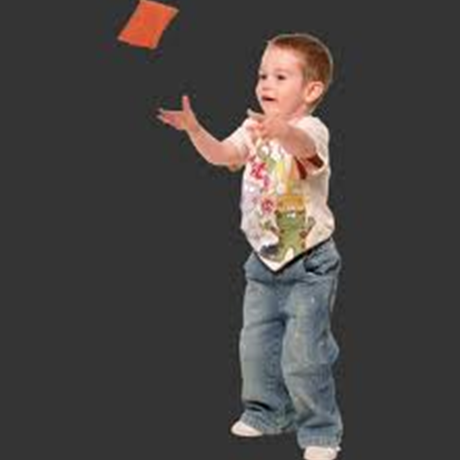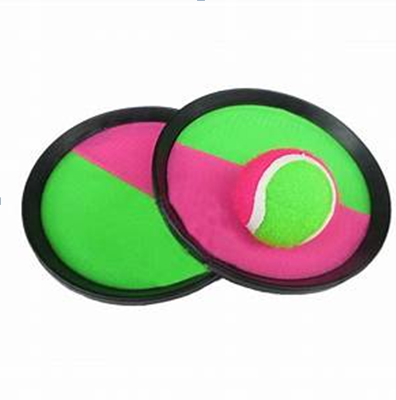HEY YOU, CATCH!
Teaching Your Child How to Catch a Ball in 4 Easy Steps.

Learning to catch a ball can be a very tricky task! It requires hand-eye coordination, visual acuity, balance, and depth perception, all at the same time! A lot of these skills are not natural to an individual, but instead, take experience to develop these skills. In fact, children start demonstrating and learning the basics to catching as young as 6 months of age.
Commonly, after a child learns to sit independently (6 months typically), they should be able to start pushing and corralling a ball in sitting without losing their balance. Being able to roll and corral a ball helps develop visual tracking and learn the timing for hand-eye coordination.
As a child gets older, they should be able to catch a ball by securing it with two hands by 2 years of age. At 3-4 years of age, a child should then be able to catch a big ball after presenting their arms out in front of them in a “ready” position and then progress to tennis ball catches in their hands at 5 years old.
Here are 4 easy progressions to practice catching at home with your child:
1) Rolling!
Start by rolling a larger or heavy ball for your child to catch. If the ball is heavier, it will roll slower, making it easier to make appropriate body accommodations to catch it. A bigger ball also rolls more slowly and is also a bigger target, requiring less visual acuity than a small ball. So starting here allows your child to work on the visual tracking along with timing in a successful, positive way.

2) Balloon Toss!
Balloons should be blown up to a bigger size so that they move very slowly through the air. Throwing a balloon in the air allows your child to get the feeling of preparing his/her arms in an upright and outstretched position to catch the balloon.

3) Bean Bag Animal Toss!
Move onto catching something that is easy to grasp like bean bags or stuffed animals. Sometimes children, particularly with poor experiences with catching or difficulty with visual acuity, may be more fearful of catching a ball, so using something softer makes it more friendly to catch.
The flexibility of bean bags and stuffed animals also makes them easy to grip and requires less hand eye coordination than a firm ball. This allows your child to start reaching out to catch and may require them to use more balance reactions to quickly move their body to catch the item successfully with an easier grip.

4) Play Ball!
Now that your child is ready to progress to an actual ball, starting with a larger ball is easier because it requires less fine motor coordination. You can start with having your child stand on a target before throwing a ball to them.

Advance them to catching without a standing target, to then make more demands for their body awareness and balance. Other fun ways to practice catching include: water balloons, baseball mitts, or Velcro mitts.

Don’t Be Afraid to Reach Out!
If your child is still having a difficult time catching and you are concerned about their visual motor or gross motor skills, reach out to the skilled pediatric occupational and physical therapists at Chicago Pediatric Therapy and Wellness Center for an evaluation at 773-687-9241. We will get you going with a game of catch in no time!


